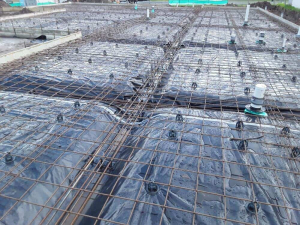Site Classification – Residential Soil Testing
Whether you are a small, medium or large scale builder or a private individual who has just purchased a block of land, Coffey Testing can help with all your soil testing, site classification and foundation design needs! We have multiple drill rigs and accredited laboratories located throughout NSW and ACT.
Successful builds start with reliable soil testing and accurate site classification.
Not only is a site classification a compulsory first step in the process of building and a requirement for council Development Approval, a site classification is also critical to the integrity of any build. An incorrect site classification increases the risk of cracking in foundations, cracking in bricks and gyprock, and movement of the frame, therefore it is important to use a reputable company that provides accurate results. With over 60 years’ experience, millions of tests under our belt and utilisation of the latest technology Coffey Testing will provide you with results you can count on.
*Currently only operating in NSW/ACT for this service, however we can connect you with service partners across Australia
What is a Site Classification?
A site classification (also known as a soil test, site class, lot classification, lot class, soil classification or site investigation) is critical to the integrity of your build and is an essential element to the design on your foundation. The site classification gives an indication of the expected amount of movement of the soils across the intended building site, which indicates the reactivity of the soils in that particular location.
What is a Soil Test (residential)?
A site classification takes into account many factors with one of the most critical factors being the results of the soil test. Soil samples are collected from site and taken back to a Coffey Testing laboratory applicable tests are conducted. Testing generally includes a borehole log and a soil reactivity test.
How is a Site Classification determined?
To establish a site classification, a value known as the ‘characteristic surface movement’ (Ys) must be calculated, this value takes into consideration the following factors:
- Zone of moisture variation, depth of crack zone and soil suction variation
- The profile of the subsurface and it’s variation across the site
- Results of the soil testing
- Cut and fill plans across a site
What are the Site Classifications?
In accordance with AS2870, engineers and builders must account for seven different site classifications; Class A, Class S, Class M, Class H1, Class H2, Class E, and Class P. These classes range from sand or rock sites where there are little to no movement (Class A) to those that are sites typically composed of soft clays, loose sand, silt and may have abnormal water conditions (Class P).
If you require a site classification for your next project, click here to obtain a quote, or contact our team here if you would like to discuss your requirements.
Salinity Testing
Do you require a salinity test? As part of our residential suite of services, Coffey Testing offer salinity testing.
A salinity test measures the level of salt in the soil. High salinity may have detrimental effects on the integrity of your foundation if it is not designed to withstand the elements of high salt content. High salinity may cause corrosion of steel reinforcing within the concrete foundation, therefore, to mitigate risk and protect the steel from corrosion, additional concrete cover, a double vapour barrier and/or an increase in concrete strength may be required.
If you require salinity testing for your next project, click here to obtain a quote, or contact our team here if you would like to discuss your requirements.
 Wind Rating Classification
Wind Rating Classification
Do you require a wind classification? As part of our residential suite of services, Coffey Testing offer wind rating classification.
What is a wind rating classification?
Wind classification is the gust wind speed that can affect a construction project. Wind affects different geographic locations at different speeds, each location is also affected by the specific surroundings of the site.
Why is it important to know the wind rating classification of my site?
Wind classification is an important consideration for engineers and builders when designing a building. A structure must be designed and built to withstand the winds that may affect the site. In particular, a wind classification often determines bracing and tie down fixing requirements.
If you require a wind rating classification for your next project, click here to obtain a quote, or contact our team here if you would like to discuss your requirements.
 Foundation Engineering & Design
Foundation Engineering & Design
Do you require a foundation design? As part of our residential suite of services, Coffey Testing also offer foundation design.
Once your Site Classification has been established, you can progress to the foundation design. Get the best foundation designed for your specific site conditions with Coffey Testing.
When foundations are designed appropriately for the soil conditions, the risk reduction and cost saving benefits can be significant for both the builder and building owner. However, in many cases, buildings have either an under-engineered foundation (risking structural problems) or an over-engineered foundation (increasing costs unnecessarily). That’s why it’s critical to work with foundation engineering consultants who are experts in both soil testing and foundation design, so you always get the perfect foundation for your site.



